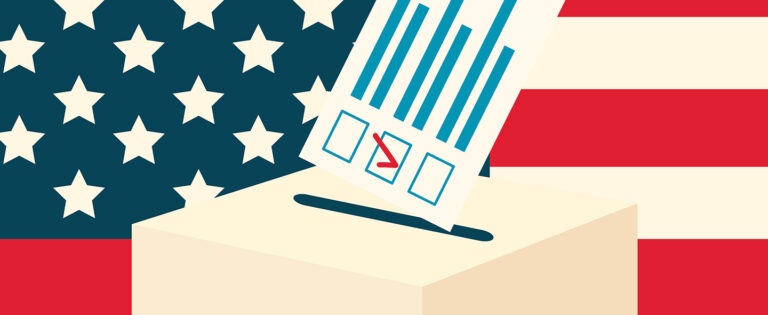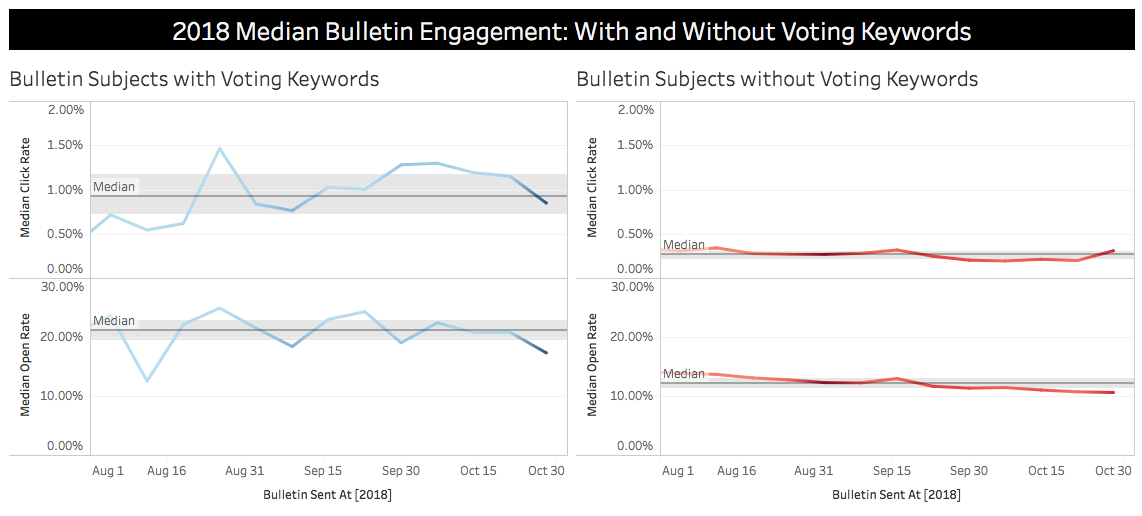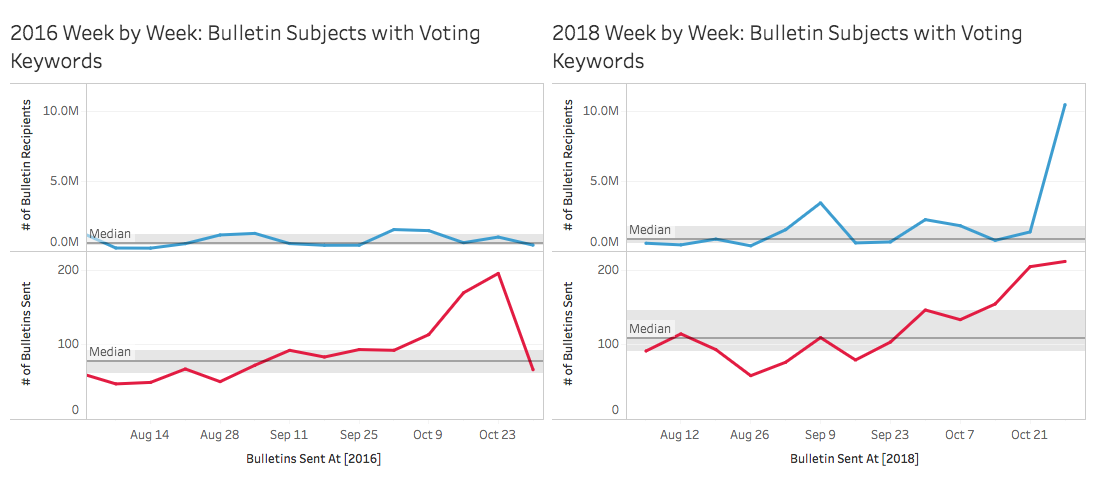
Election Day in the United States is on Tuesday, November 6.
“Have you voted early?”
“Do you have a plan to vote?”
“Can our candidate count on your support?”
“Contribute to the cause!”
“Blue wave!”
“Red wave!”
“The election of our lifetime!”
If you’re of voting age in the US, you’ve no doubt been inundated with messages across just about every medium. Television ads flood the air, mailboxes are overflowing with campaign flyers, fundraising emails are pouring in, phones chirping with text messages from political parties. And then there’s social media. It can be overwhelming.
It’s not just the politicians, political parties, and issue groups that want citizens to know about the election, however. As the overseers of election, government is sending messages about how to register, where to vote, and other critical information.
At Granicus, we wanted to find out more about public sector outreach regarding elections, so we examined the millions of bulletins sent out by our 4,000 government clients. We compared bulletins sent through govDelivery from August 1 to October 31 with subject lines containing keywords like “vote,” “voting,” “election,” and “ballot.” We also looked at website keyword searches from our govAccess clients containing the keywords “early voting,” “election,” “vote,” and “ballot.”
Among our findings:
More time, energy, and money tends to be thrown at presidential-year elections, but it seems that all sides are more pumped up this year. That’s true of government too, which has more than doubled the number of email recipients it has sent messages to with election-related keywords. In 2016, government organizations sent out 1,249 bulletins to just over 11 million (non-unique) recipients. By 2018, that number swelled to 1,571 bulletins reaching more than 25 million recipients.

Citizen engagement with election-related messages remains consistent between 2016 and 2018, with each showing increased interest from August through October. In the month leading up to Election Day this year, the engagement rate reached 30.3 percent.

Citizens are much more interested in messages with election keywords in the subject line than those without—and it’s not even close. Bulletins in 2018 with election keywords had a median open rate of 21 percent and a click rate of 0.92 percent; meanwhile, non-election bulletins hovered closer to a median open rate of 12 percent and a 0.27 percent click rate. These rates track nearly identically to those in 2016.

Government is trying to close out strong in 2018. As Election Day has drawn nearer, organizations are sending out an increasing number of bulletins and seeing a surge in the number of recipients. The peak in emails sent was the week of October 28, when 211 bulletins were sent out – reaching an enormous 10.5 million recipients (non-unique). While 2016 saw a similar rise in bulletins sent, the number of recipients remained remarkably flat.

Local websites using govAccess saw more than 12,000 searches conducted with election-related keywords. The peak on October 22, when 830 searches took place.
In a democracy, there is perhaps no civic duty more important for citizens than that of voting. Do you need more information about how to vote on Election Day? Check out your Secretary of State’s office or visit the federal government’s voting website.
And while you’re in the voting booth, don’t forget about the local clerks and election judges that make it possible!